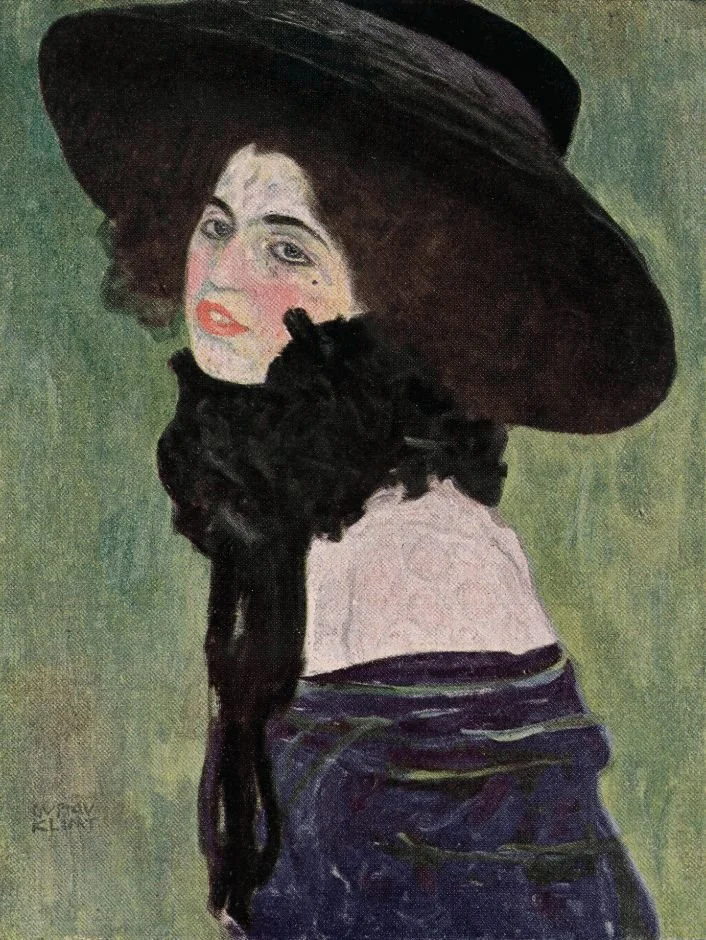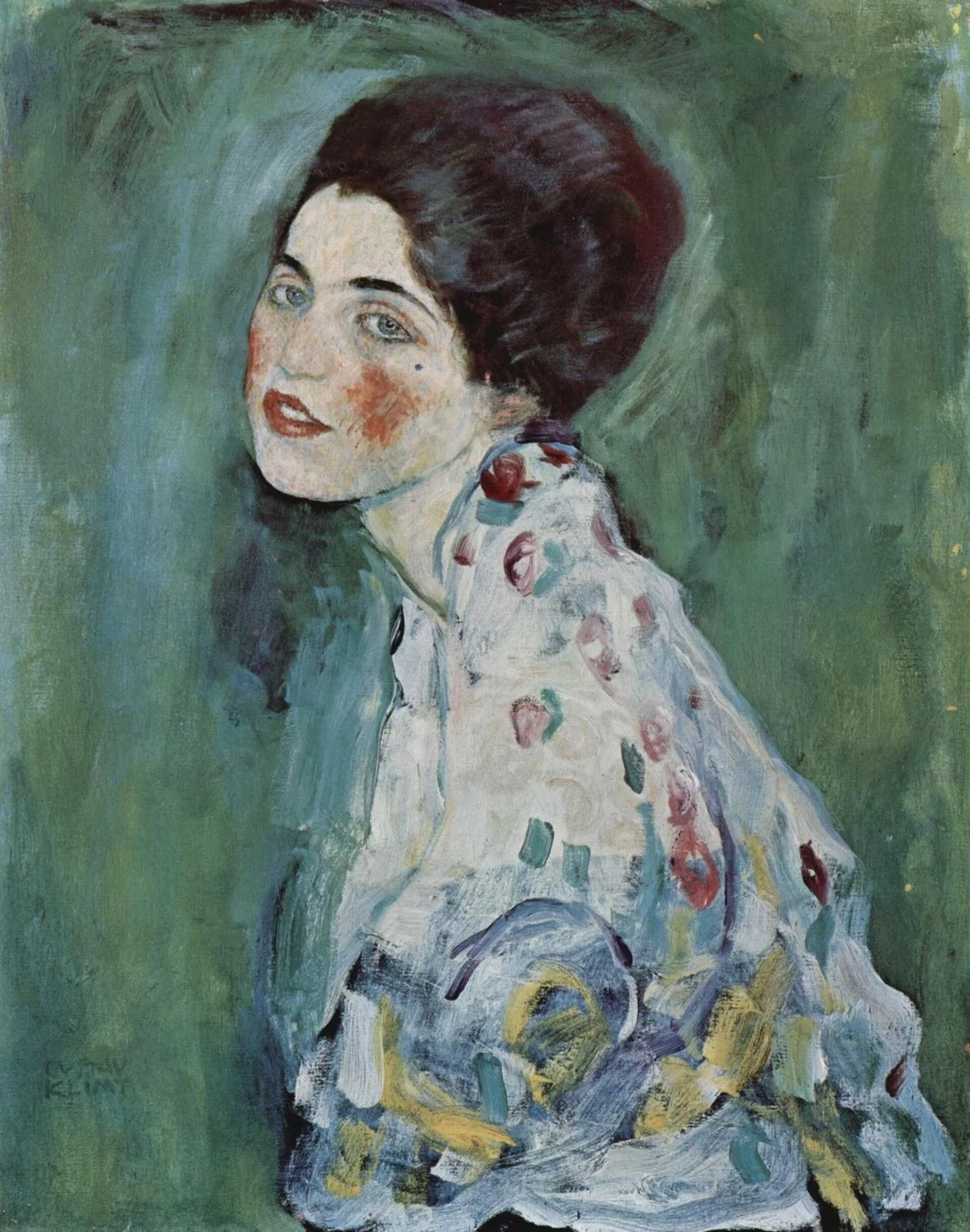Portrait of an Unknown Woman
This time, I would like to take you on a wonderful journey through time. We will be guided on this journey by a painting – not just any painting, but a work by Gustav Klimt, one of the most famous Austrian artists. This is an oil-on-cardboard artwork. It is believed to depict a woman whom Klimt loved and which was created in 1912. The physical dimensions of the Portrait of a Young Lady are 43 cm wide by 50 cm high (with frame), so it is a small painting.
Klimt, Portrait of a young lady, ca. 1900
Klimt was a symbolist painter and the Golden Phase of the artist's career was inspired by the Byzantine mosaics he had admired during a trip in 1903 to Venice and Ravenna. This period came to a close around 1910, as can be seen in the evolution of his portraits.
In 1909, he travelled to Paris, where he encountered the latest artistic trends of the avant-garde. He started using quicker, shorter brushstrokes to express more emotions in his paintings.
In this portrait he doesn't use the golden ornate, but he still uses the mosaic forms with smooth colours which are more in harmony with the Model of the portrait. He draws attention to her face, highlighting her look with the hat and scarf. The pink tones accentuate the girl's cheeks, making her youth visible and palpable. The model's pose emphasises her femininity, elegance and sensuality.
This story is exciting, not only because the painting is by a famous artist, but also because of its history. We are going to immerse ourselves in a bizarre but true story that would make the perfect basis for an exciting novel.
Klimt, Portrait of a young girl, 1916-1917
In 1996, Claudia Maga, a secondary school student, discovered that the Portrait of a Lady was actually the Portrait of a Young Girl, a painting believed to be lost. The artist modified the young girl's attire to create a whole new masterpiece.
On the one hand, Klimt uses the same tone as the tone of the lips to paint the decorations on the woman's dress. On the other hand, he darkens the background fabric using the colours from the dress.
The portrait was mysteriously stolen the following year. And twenty-two years later it was found by the galleries's gardeners in a plastic bag.
This fantastic journey has been captured in a book by Camille de Peretti, who gave this portrait and the unknown woman in it, a name, a family and a personal history.
The main characters are so vividly portrayed that we can experience their emotions. The descriptions of places are so realistic that you can picture yourself strolling through 1900s in Vienna or experiencing the feverish atmosphere of New York City on the brink of the Great Depression.
And I'll let you discover the unexpected ending to this suspenseful story, which will undoubtedly pleasantly surprise you.
ARTALK - Io Roussel

